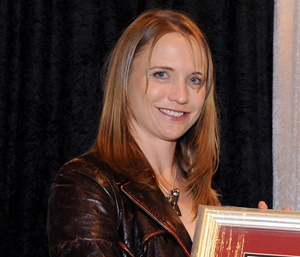Latest News Archive
Please select Category, Year, and then Month to display items
02 January 2025
|
Story Gerda-Marie van Rooyen
|
Photo Supplied
 Leading the research in South Africa is Prof Linus Franke from the Department of Soil, Crop and Climate Sciences.
Leading the research in South Africa is Prof Linus Franke from the Department of Soil, Crop and Climate Sciences.
Scientists are actively pursuing the successful breeding of diploid hybrid potatoes from inbred lines. This is expected to revolutionise potato breeding as it holds the key to rapid genetic progress. It will introduce new varieties for commercialisation through seed. Currently, existing potato variants have a gene that renders self-pollinated seeds infertile.
Prof Linus Franke, an academic in the Department of Soil, Crop and Climate Sciences at the UFS, is leading the research in South Africa. “This technology allows the production of genetically uniform potato seed that is easy to transport and largely disease-free.” He says this differs from conventional breeding whereby only vegetative propagation is possible due to tetraploid varieties in potatoes. It also risks carrying pests and diseases from one generation to the next – leading to the accumulation of pests and diseases with each round of multiplication.
Seed innovation
Prof Franke explains that Solynta BV, a seed company based in the Netherlands that produces potato varieties that can be grown from seed, has included South Africa in their research efforts because it is one of Africa’s largest producers and exporters. Through his academic relationship with Wageningen University and Research, a Dutch institution renowned for its agricultural endeavours and food production, the UFS became involved in researching hybrid potatoes grown from seed.
Diploid seeds containing two sets of chromosomes allow easier gene manipulation to increase predictability and speedier genetic progress. The breeding approach enables the incorporation of tolerance to pests, diseases, abiotic stresses (cold, heat, drought) and other desired genetic traits.
Although Prof Franke is optimistic about this research, he is not blind to disadvantages. “Potato seeds are tiny and have little energy reserves, making it harder to grow potatoes from seed than from tubers.” He says potatoes from seed will take longer to cultivate than tubers, as farmers need to grow plantlets from seeds first, adding six weeks to the growing period. “It is possible that commercial farmers can grow potatoes directly from seed. Alternatively, perhaps more likely, specialised growers will produce tubers of potatoes from seed; these tubers are then sold as seed tubers to other potato farmers, who then continue their normal practices of producing potatoes for the market from tubers.”
Financial benefits
Prof Franke says farmers have reason to get excited. “Seed potatoes will reduce input costs, as varieties with enhanced tolerance to pests and diseases require less pesticides. Planting one hectare of potatoes requires three to four tonnes of potato tubers, but only one 25 g packet of potato seeds.” Since potatoes are a more valuable commodity than maize, this technology might also increase farmers’ income potential.
UFS prides itself on Pauline Gutter
2014-12-04

Pauline Gutter |
Her work can be described as a visual attack of marks and colour, and the purposeful application of layering and interweaving of layers that gives the identity of continuous flux and ideological migration. Her work highlights the ‘removal’ of the farming community from their land. A review of a recent exhibition described her themes as: “A struggle for survival prevails in the dangerous world that is projected to us in the paintings …”
Gutter is not just a top professional artist, but also a well-known brand. True to her roots, her work often mirrors a passion for the farming community. In 2013, she won the ABSA L’Atelier prize of R125 000, as well as a half year’s stay in the Cité Internationale des Arts in Paris, France.
This art competition is South Africa’s most prestigious art competition and is held annually for artists between ages 21 and 35. This award not only ensures South Africa’s emerging artists of recognition, but also affords them the opportunity to develop their talents abroad.
The UFS is very proud of breeding this class of artist. According to Gutter, her lecturers allowed them space to work on their own identities. Her work has now moved far from simply being portraits and sculptures, it also makes an impact on those who see it.
As a student, Gutter was involved in many community projects at her residence. In 2003 she was one of the two managers of the Dithwele waste sculpture park competition, an initiative of SAB. She is a diverse artist who has worked on KYKNET productions as co-worker and assistant. Gutter also does freelance camera work.
Furthermore, Gutter was on the Mail & Guardian’s list of top 200 young South Africans, an annual list that has become the premier collection of the leaders of tomorrow – and in many cases, today. She also received the Helgaard Steyn prize and was a finalist in the Sasol New Signatures Art Competition.